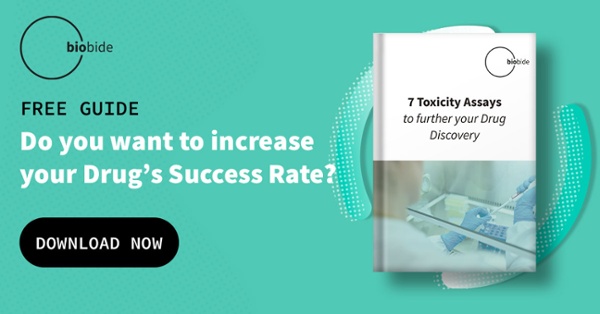Chronic Toxicity studies are a form of assays that are likely to affect the health of a subject if exposed to a substance repeatedly or constantly over an extended period of time to know the long-term effects.
The OECD (Organization for Economic Co-operation and Development) has set specific guidelines with expertise and knowledge so that laboratories can ensure that the practices employed are safe and consistent. This helps to set acceptable parameters for the safe use of chemicals to which humans are directly and indirectly exposed.
Chronic Toxicity assays analyze the reaction to chemicals that are considered hazardous or lethal, for example, teratogens, which cause malformations, or can have a mutagenic effect. These studies provide valuable information about the cumulative effects, delayed responses, and protentional development of chronic diseases or conditions resulting from repeated exposure.
The OECD’s role in Chronic Toxicity Research
The OECD operates globally to improve human lives through the creation of guidelines that laboratories can implement in their studies assessing the effect of harmful chemicals. The organization works with government bodies and policymakers to set acceptable standards for the use of chemicals in the products that a major part of the population is exposed as well as those chemicals that the environment can potentially be exposed to. As part of one of the many guidelines that the OECD has developed throughout the years, there are guidelines specifically to analyze Chronic Toxicology. The OECD facilitates standardized methodologies, protocols, and harmonization of the interpretation and application of the data obtained from the assay across the members and partners of the organization becoming a crucial entity of reference in this field. In addition, the guidelines for the most part include recommendations for study design, dosing, duration, and endpoint to be evaluated. This helps to ensure consistency and comparability of data generated from Chronic Toxicity studies, facilitating the assessment and regulatory decision-making processes. Therefore, laboratories should be incentivized to these guidelines when designing and performing assays to test the potential hazards these products can potentially generate.
Hundreds of different guidelines exist for Chronic Toxicology assays using both animals and alternative models, to ensure they give consistent results.

Chronic Toxicity inclusions
Many chemicals and compounds are listed in the OECD guidelines as suitable for use to test Chronic Toxicity. These include:
- Metals – such as copper, lead, and cadmium.
- Pesticides and herbicides.
- PCBs (polychlorinated biphenyls) – man-made industrial chemicals.
- Cyclopamine – can potentially cause cancerous tumors.
- Retinoic acid – is added to skincare and cosmetic products and may increase the risk of skin cancer.
- Nitrobenzene – a highly toxic health hazard.
- Estrogens – a carcinogen linked to estrogen-dependent breast cancers
These chemicals can have an excruciating effect on human life, and most often in the long term. Understanding how this occurs and learning how to prevent it is a key factor in Chronic Toxicity research.
Chronic Toxicology studies include several key components to evaluate the potential adverse effects of a given substance:
- Repeated or continuous administration of the test substance.
- Selection of the animal model where compounds are tested, based on their physiological and genetic similarity to humans, usually rodents.
- Dose selection, based on acute toxicity studies. The doses selected for chronic studies should not produce acute toxicity.
- Monitoring of clinical signs and behavioral alterations during the study.
- Examination of organs and tissues at specified time points and at the end of the study to see any internal induced damage.
- Additional endpoints: these include other complementary examinations such as biochemistry, hematology, immunology, genotoxicity, or specific organ function assays.
The overall goal of these assays is to identify and characterize any adverse effects that may occur as a result of long-term exposure to a substance or substances, providing information for the required risk assessment.
Chronic Toxicity testing on Zebrafish
Historically, toxicology tests were performed on rodents and other mammals, however, the cost, the high time demand, and the high ethical concerns of working with mammals produced the rise of New Alternative Methods (NAMs). The aim of these models is to increase the cost-effectiveness of animal research and find alternatives with less ethical impediments such as the implementation of in silico models, cell-based models, or alternative in vivo models. In this sense, zebrafish allies as a fitting alternative model, being that is small scale tropical fish that offers a large number of advantages such as it is a much cost-effective and less time-consuming alternative to rodents due to the fact that:
- Able to produce hundreds of embryos every few days.
- Enable the development of High Content Screening (HCS) assays due to their small size.
- High genetic homology with humans.
- Low-cost maintenance and feasible husbandry.
- Possibility to use embryos instead of adults due to fast organogenesis.
- Transparencyofthe larval stage, allowing easy and direct manipulation and observation.
Following the OECD and other regulatory guidelines, zebrafish have been used in many kinds of toxicology assays such as:
- Acute toxicity
- Reproductive toxicity
- Developmental toxicity
- Neurotoxicity or Neurobehavioral toxicity
- Cardiotoxicity
- Endocrine disruption
- Carcinogenicity
- Ocular toxicity
- Otix toxicity
The implementation of zebrafish as an NAM in toxicology assays is fairly recent compared to the use of rodents and other animals. However, it is fast becoming the first-choice solution for toxicology studies due to its advantages over other models, especially time and cost efficiency.
This small size fish also resonates with the 3Rs (Replacement, Reduction, and Refinement) principle policy, which aims to reduce animal testing and provide alternative options such as for toxicology assays and Drug Discovery.
The zebrafish model has high relevance in toxicology studies because of its advantages and it is widely used by public and private institutions and companies.
A quintessential and referential example of the use and pioneers of the implementation of this alternative model is Biobide, which has developed a broad variety of HCS assays based on available regulatory guidelines to advance the toxicology screening and safety of numerous chemical compounds widely used in industry and everyday products. HCS assays offered by Biobide include toxicity evaluation on teratogenicity, thyroid disruption, neuromuscular system, heart, kidney, and liver, or environment through biosensors and the reproductive system.
Also, Biobide is collaborating internationally to set up the standardization and harmonization of several toxicity assays through international collaborations and regulatory agencies such as OECD, FDA, EPA, or NIH/NIEH.
Conclusion
The evaluation of the toxicity of chemical products used in industry and everyday life is of tremendous importance. Nowadays, hundreds of new compounds are produced daily, being a relevant health concern to the population and the environment. Therefore, it is crucial to have appropriate testing models that are affordable and allow for agile and quick results to fulfill the demand of testing large amount of compounds.
As well as acute toxicity can be rapidly assessed, chronic effects are harder to test and can present severe consequences. Therefore, Chronic Toxicity needs cost-effective testing models that allow HCS with reliable results and fewer ethical concerns. In this sense, the zebrafish model has gained a lot of attention due to the numerous benefits it presents.
The findings from Chronic Toxicity studies play a crucial role in regulatory decision-making processes, such as the establishment of safe exposure limits, risk assessments, and the development of safety guidelines for the protection of human health and the environment.
OECD is permanently working on assessing proper guidelines for the evaluation of Chronic Toxicity paying close attention to NAMs available and ensuring that toxicology results are consistent, reliable, and comparable between different laboratories.
Sources
- https://academic.oup.com/toxsci/article/86/1/6/1654090
- https://www.safecosmetics.org/chemicals/retinol-and-retinol-compounds/
- https://www.oecd.org/chemicalsafety/testing/oecdguidelinesforthetestingofchemicals.htm





